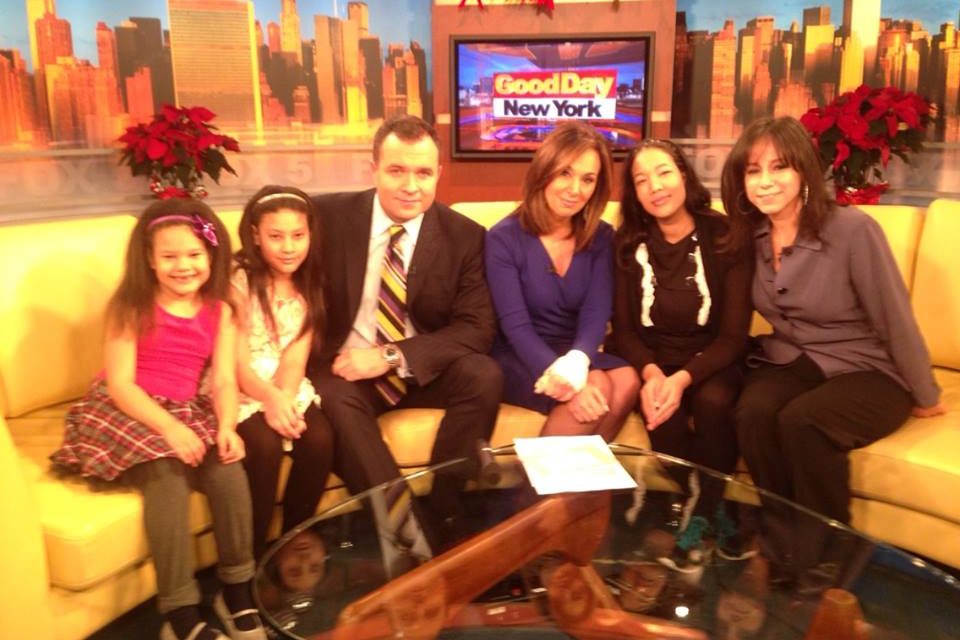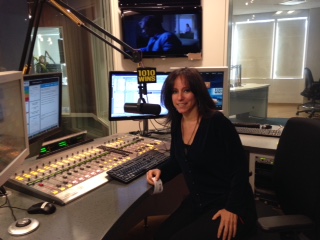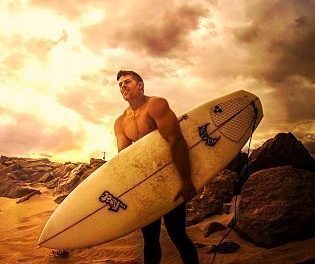
Guidance from a Stranger? How Can We Save More Lives when it comes to Living Organ Donation?
Over the years, with Save 1 Person (Save1person.org) I’ve seen when you get media attention for someone who needs life-saving help there are many people willing to save a life. This is especially true when it comes to living kidney donation. For instance, when Elaine Deleon’s need for a living kidney donor was picked up by Fox’s Good Day NY, close to 200 people wrote in to possibly donate a kidney.
We can get many people to be living kidney donors. Often, the hospitals are not equipped for the overflow and actually turn donors and donees away. Please keep in mind that the purpose of this post is not to bash hospitals who save lives. They are doing the best they can. The purpose of this post is to see if a different angle of the situation can create new answers and solutions to emerge which can help a greater number of people who need living organ donors.
Over the years people who wanted to donate a kidney have told me, in some cases, the hospital discourages them. Some people, understandably so, are ruled out right away if they have previous health issues such as cancer, heart conditions, kidney stones and other conditions. I’ve heard potential donees say that hospitals don’t get back to them. Some hospitals won’t even take strangers who come from the media because I’m told through the grapevine, these people are more likely to not follow through, so it’s not worth the time and effort. Each hospital is different.
Recently, one of the Save 1 Alerts consisted of Elaine Deleon, a mother of three who needs a kidney (in the picture above with the long black hair sitting next to Rosanna Scotto). I sent out a Save 1 Alert to the media in November 2014. This time Good Day NY picked up the story and close to 200 people wrote in. The story was also picked up by the Daily News (I think 7 people responded) and a Christian Radio station (maybe 30 people wrote in from this station). I received interesting updates from concerned parties in the aftermath of the story. One thing I was told, after I had in hand a pile of emails from 200 people who wrote in, that the hospital told Elaine that there were no donors for her and to check in with family members who previously said no. How could that be I thought, I have 200 emails of people who may be able to help, how could the hospital say they had no donors? At this point I got involved with the hospital. Can you imagine needing a kidney, raising three kids and then having to deal with these type of obstacles????
Moving forward – finally cross match kits were sent out to five more people who responded to the media’s cry for help for Elaine. This particular hospital that Elaine is working with will only send 5 cross match kits at a time, which can take a couple of months from sending out to lab results. So from a set of 5 cross match kits sent out (three people from a Good Day NY segment and two from the Christian station) all five people were positive, which means each person could move forward with further testing. From this batch of people, two people lived out of state (the hospital ruled them out because they lived too far away). One person had a change of heart, one donor, who saw the tv segment locally, was not asked to move forward for Elaine. The woman who is currently testing heard about Elaine from the Christian radio station. As a side note, two of these potential candidates who responded to the Good Day NY segment, who are not being considered for Elaine, were asked to test for two other people who need a kidney (another young mother and a man from NJ who have both been on dialysis for quite some time). One person moved forward with testing for Elaine and passed the series of tests after probably five months or so. A surgery was scheduled. To which everyone was so excited. Less than one week before the surgery was scheduled the hospital canceled the surgery, because they claimed Elaine’s insurance was not the correct one needed for this operation. Shocking! Why wasn’t the insurance checked out by the hospital to make sure, the right one was in place months ago? As a result of the surgery being canceled, the donor backed out and was spooked (so to speak). Now, the whole process must start again. Can you imagine the heartbreak for Elaine? Elaine as a result of this latest occurence at this particular hospital is switching hospitals, to one that will be more communicative with her and treat her with respect and human dignity in this process.
My question is: Why can only five cross match kits be sent out at a time? And after a person passes the cross match test, only one person can move forward at a time for the additional tests. Why can’t more than one person test at a time for the series of tests, when he/she passes the cross match test? It would seem more efficient for the person who needs a kidney to test a couple of people at the same time after the initial cross match test results are obtained. So, if there’s an issue with one potential donor, the other person can be ready to go and not wait many more months to move forward. These tests can be painstakingly slow in some cases. Why can’t they have a back up person testing as well? And if the back up person is not needed, more often than not, this person would likely be interested in saving another life, and all the tests would be finished. As in the case of Elaine, six months, one potential donor moved forward and then the potential donor backed out….What a waste of time, with noone as back up ready to go immediately. So, my question is, how do we make this system more efficient for the greater good?
Another issue I ran into at the hospital: how do you value one life over another? What’s the answer? Here’s another issue that emerged from another Save 1 Person Alert that brings up questions that needs answers and solutions.
A kind hearted woman from a Help Me Howard Segment at PIX wrote in to save a life of a man featured in a segment. This man, Torrey Green, received a kidney from another viewer, Sarah, and this woman’s kidney was not needed for Torrey. We asked this kind woman, who responded to Torrey’s news segment, to test for a man by the name of Steven on dialysis. After this woman completed her tests for many months we were all excited that Steven would finally get this kidney. To our surprise this woman agreed to be in an altruistic chain at the hospital for other people in need of a kidney. We weren’t sure if this was miscommunication on our end, or if this woman saw this hospital’s altruistic chain as a better option. We thought it was clear to this hospital that since this woman went in for a cross match for Steven, and was not a match, she would immediately go into a swap program for Steven (swap programs are another option to save a life, if the initial cross match test between donor and donnee are not a match). It was not meant to be. God had his own plan. This woman, a superhero, saved four lives in an altruistic chain the hospital suggested, and thank God four lives were saved. Magnificent, beautiful, but what about Steven who still needed a kidney? Again from the Elaine segment from Good Day NY we had an overflow of potential donors. We asked, one person from this list obtained from the media, if he would move forward as a potential kidney donor for Steven again at this same hospital. Again this potential donnee for Steven was persuaded to go in another direction – it was not to save Steven’s life but for others. The story is still unfolding so there will be more to say later on…..
The question that I ponder from this experience and what I see so far: how do you value one life over another? Because it is an altruistic donor, does that mean that Steven does not have the same value as people who need a kidney in a Swap / Altruistic Program at this hospital’s choosing in the moment? This raises an ethical question. How do you solve it? How do you improve the system which would include media getting kidneys for people and the hospital being equipped to handle it for everyone?
The questions I’m left with from my experiences are the following:
1) When you get media attention, and people do save lives, how can the hospital employees handle the overflow in a timely and efficient manner for everyone?
2) If you send in an altruistic donor from the media for a specific person who needs a kidney, how do you make sure the donor gets to the person we are trying to save in a swap program for the intended individual?
3) Do you need an outside, paid organization to expedite this process of living kidney donations who can work hand in hand with hospitals and the media? Once there are media spots and attention on a regular basis, people will step up to save lives. Now, We have a list of people willing to save lives that are halted because the hospital is not equipped to move forward. How do we change that?
I ponder these questions, and I know the answers can save so many more lives. The vast majority of people who need kidneys are waiting for someone to die before his/her life can be saved. I’ve noticed there are tons of people willing to be a living kidney donor if they are aware of the person who needs the kidney and educated about the process. The media and living organ donation is an untapped market that can save countless lives. There has to be a way to handle the overflow at hospitals, so lives are saved in a timely fashion and lives are not lost in translation. When I say translation I’m referring to miscommunication, follow through with potential donors and administratively handling it effeciently when hundreds and thousands respond to save a life of a person in need of a living organ donor.
That’s the question I put out to you: how do we solve this problem so that countless people can be helped by the discovery of new answers and solutions to the ever increasing need for living organ donation? The media and hospitals working together have the capacity to break new ground, create new systems and save countless lives. What’s the first step? Save 1 Person. Save Everyone Who Needs a Living Organ Donor!




